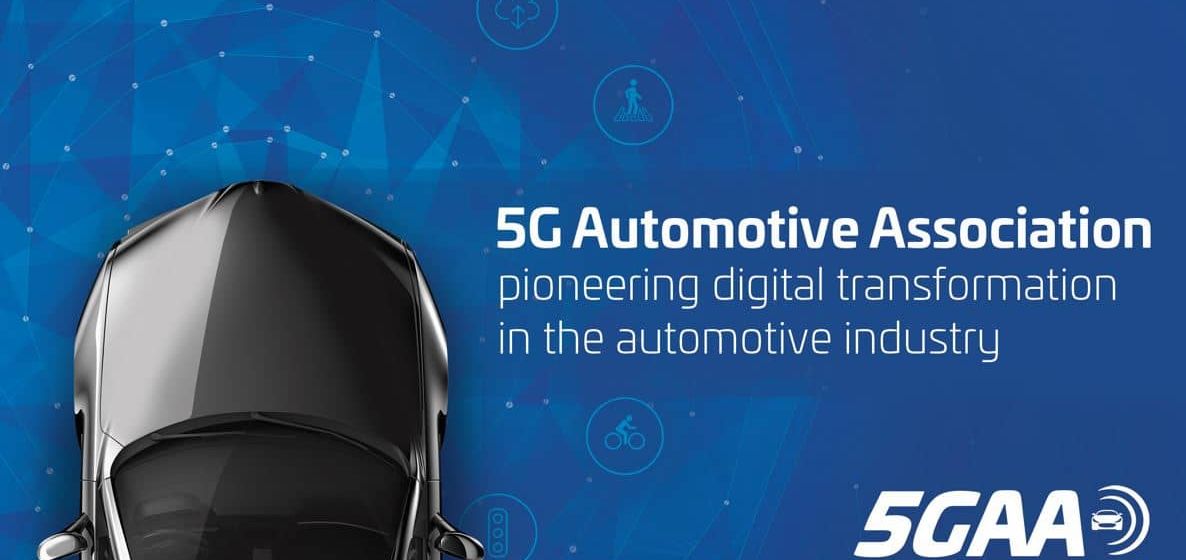
5GAA C-V2X Workshop and Demonstration – 10 July 2018 – Paris, France
SAVE THE DATE
5GAA C-V2X Workshop and Demonstration
10 July 2018
Paris, France
The 5G Automotive Association (5GAA) are pleased to announce our next Workshop and Demonstration with the support of PSA, Ford and BMW. to present and showcase Cellular-Vehicle-to-Everything (C-V2X) technology to European transport stakeholders including EU Member States Ministries, Road Traffic Authorities & Road Operators, as well as a wide array of interest groups and industry representatives.
With the support of UTAC-CERAM, this interactive Workshop and Demonstration is intended to advance the dialogue between automakers, technology providers, mobile network operators and the overall transportation community on the capabilities, timeline and deployment models for Cooperative Intelligent Transport Systems (C-ITS) in Europe.
This event will also showcase the most recent developments and deployment initiatives around C-V2X, paving the way towards 5G for the uptake of Cooperative, Connected and Automated Mobility (CCAM).
About 5GAA
The 5G Automotive Association (5GAA) is a global cross-industry organisation of companies from the automotive, technology and telecommunications industries (ICT), working together to develop end-to-end solutions for future mobility and transportation services.
Created in 2016, the Association is comprised of over 80 members whose mission is to develop, test and promote communications solutions, initiate their standardisation and accelerate their commercial availability and global market penetration, to address society’s connected mobility and road safety needs with applications such as automated driving, ubiquitous access to services and integration into smart city and intelligent transportation.
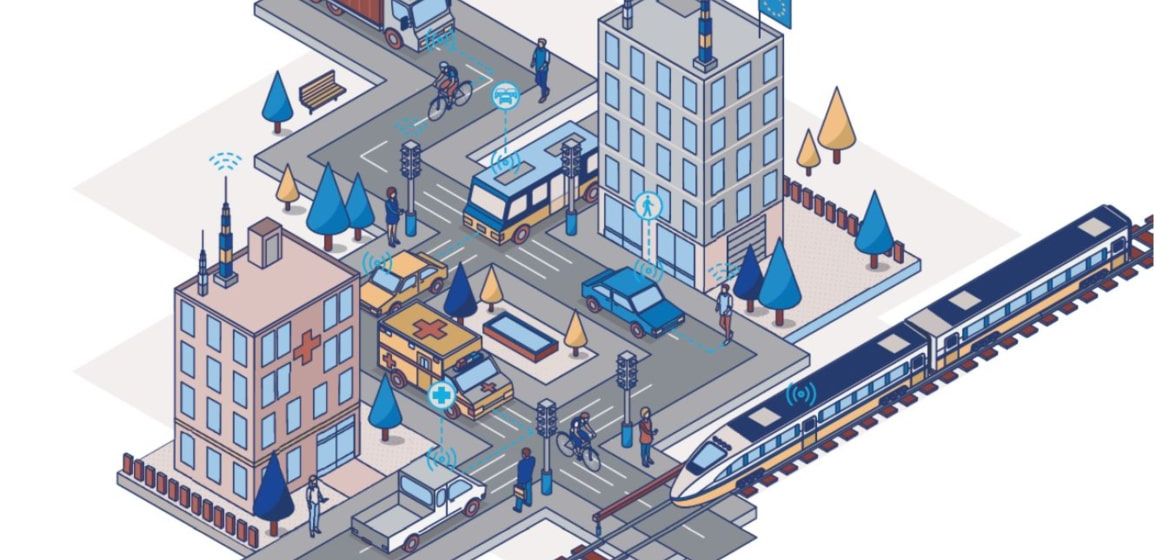
C-ITSEU
The Delegated Act currently being drafted by the European Commission will have a significant impact on the future deployment of Cooperative Connected and Automated Mobility in Europe. It will regulate the deployment of Cooperative Intelligent Transport Systems (C-ITS), which enable the communication between vehicles, infrastructure and with other road users.
5GAA is a proponent of Cellular-Vehicle-to-Everything (C-V2X), a unified technology platform for connected vehicles, including connectivity to vulnerable road users and infrastructure, encompassing LTE-V2X and 5G-V2X. C-V2X technology thus offers a direct evolution path to 5G.
As illustrated below, C-V2X includes both direct short-range communication in the 5.9 GHz ITS spectrum band (not requiring network coverage or subscription) and long-range communication in licensed spectrum allocated for 4G and 5G, into a single, cost-effective platform.

While 5GAA fully shares the European Commission’s objective to “make Europe a world leader in the deployment of connected and automated mobility”[1], 5GAA is very concerned that the Delegated Act will rule out C-V2X, the most recent technology for C-ITS.
5GAA strongly advocates for a forward-looking C-ITS regulatory framework, allowing technology neutrality and evolution. The future requirements should ensure an effective, cost-beneficial and proportionate regulatory framework, as per the Commission’s Better Regulation guidelines, ultimately improving road safety, traffic efficiency and air quality, while fostering innovation.
5GAA believes that the future Delegated Act should abide in all its dimensions by the technology neutrality principle to prevent unfair market distortion. This principle should be respected in letter and spirit: requirements, standards or specifications governing the deployment of C-ITS should be non-discriminatory, avoiding any technology lock-in.
The deployment of different connectivity solutions, including C-V2X, should be allowed and embraced by the Delegated Act, on par with any other technology.
[1] “On the road to automated mobility: An EU strategy for mobility of the future” COM(2018) 283
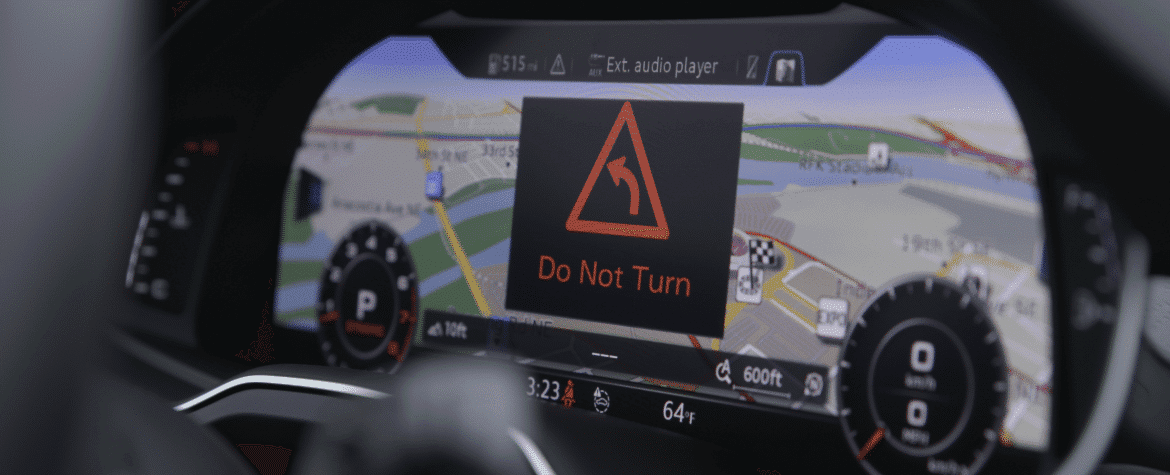
5GAA, Audi, Ford and Qualcomm Showcase C-V2X Direct Communications Interoperability to Improve Road Safety
WASHINGTON, D.C., April 26, 2018 – C-V2X Communications’ Superior Performance, Synergies with Telematics Units and Evolutionary Path Towards 5G Offers Greater Potential to Save Lives; World’s First Showcase Across Vehicle Manufacturers Shows Readiness for Industry Deployment as Early as 2020.
| Downloadable Resources | |
|---|---|
| Photos | |
| Infographic | |
| Video clip 1 | |
| Video clip 2 |
5G Automotive Association (5GAA), Audi AG (NASDAQ: AUDVF), Ford Motor Company (NYSE: F) and Qualcomm Technologies, Inc., a subsidiary of Qualcomm Incorporated (NASDAQ: QCOM), announced today the world’s first demonstration for Cellular Vehicle-to-Everything (C-V2X) direct communications technology operating across vehicles from different manufacturers. C-V2X is a global solution for V2X communications to support improved automotive safety, automated driving, and traffic efficiency, and is the only V2X technology based on globally recognized 3rdGeneration Partnership Project (3GPP) specifications with ongoing evolution designed to offer forward compatibility with 5G, and leveraging upper layer protocols defined by the automotive industry, including Society of Automotive Engineering (SAE) and the European Telecommunications Standards Institute (ETSI) organizations.
The demonstration showcased the benefits of using C-V2X real-time direct communications on the globally harmonized 5.9 GHz ITS spectrum for vehicle-to-vehicle (V2V) collision avoidance and improved road safety without any dependency on cellular operator network involvement, credentials or coverage. The organizations also unveiled initial field test results showing a significant range, reliability and performance advantage of C-V2X direct communications, with more than twice the range and improved reliability compared to 802.11p radio technology. Based on C-V2X’s potential to enhance safety and save lives, the 5GAA, Audi, Ford and Qualcomm Technologies encourage the broad automotive ecosystem to accelerate adoption of C-V2X, which is expected to be deployed as early as 2020.
Featuring Audi and Ford vehicles which incorporate the C-V2X technology utilizing the C-V2X chipset from Qualcomm Technologies, the showcase exhibited various scenarios of how C-V2X communications is beneficial for road safety. These scenarios included situations with obstructed or no visibility, including Left Turn Assist and Emergency Electronic Brake Light use cases, in which vehicle-to-vehicle (V2V) communications alerted surrounding vehicles when cars were turning left or braking. Additional use cases were featured, including a vulnerable road user (VRU) demonstration showcasing what can be possible with future vehicle-to-pedestrian (V2P) communications. Use cases for vehicle-to-infrastructure (V2I) communication were also demonstrated, which showcased how direct communications can work closely with traffic signal controllers to ensure reduction in carbon emissions and optimization of traffic efficiency in cluttered intersections and dense environments.
C-V2X is supported by a broad automotive ecosystem, that includes the fast-growing global organization 5GAA, which currently has over 80 members comprised of leading automakers, Tier-1 suppliers, software developers, mobile operators, semiconductor companies, test equipment vendors, telecom suppliers, traffic signal suppliers and road operators.
Designed with a focus on security, C-V2X benefits from established security transport layers and application protocols defined by the automotive standards communities, including SAE, ETSI, International Standards Organization (ISO), and Institute of Electrical and Electronics Engineers (IEEE) 1609, and Qualcomm’s decades of investment in cellular technologies. C-V2X solutions are expected to be more cost efficient and economical over competing technologies as this functionality gets integrated into the base cellular modem product that automakers equip in every vehicle.
“We are excited to witness this monumental breakthrough in the evolution of C-V2X and the growing momentum behind this life-saving technology,” said Christoph Voigt, Chairman of 5GAA. “After years of development supported by leading carmakers, technology providers and the automotive ecosystem at large, C-V2X is ready to improve road safety with deployment in production vehicles and road infrastructure as soon as 2020, leveraging a state-of-the-art proven radio with decade-long developed automotive software protocols. This unique showcase firstly demonstrates the commitment of our members to ensure that the potential of the C-V2X technology is realized and represents a key step towards the next generation of cellular technology, 5G.”
“C-V2X is critical to enhance road safety and also gives us a look into the key role that vehicle-to-vehicle and 5G wireless technologies play in the future of Audi and the automotive industry in general to support autonomous driving,” said Gerhard Stanzl, Head of Predevelopment Smart Mobility and Machine Learning, Audi Electronics Venture. “This interoperability demonstration marks a major milestone on the road to safer driving and we look forward to working alongside the extensive automotive ecosystem in helping accelerate C-V2X deployment globally.”
“With its ability to safely and securely connect vehicles, along with its evolution into 5G, C-V2X is integral to Ford’s vision for transportation and the cities of the future in which all cars and infrastructure collaborate speaking the same language,” said Don Butler, Executive director connected vehicle platform and product, Ford Motor Company. “We are very encouraged by preliminary test results which support our belief that C-V2X has superior V2X communication capabilities. We are also very pleased to see strong ecosystem support of product roadmaps that accelerates time to market for C-V2X.”
“At Qualcomm Technologies, we are committed to accelerating automotive innovation and enabling carmakers to deliver safe and connected vehicles, and we strongly believe that C-V2X can offer significant improvements in road safety for people worldwide,” said Nakul Duggal, vice president of product management, Qualcomm Technologies, Inc. “After years spearheading the development of C-V2X we are ready for its rollout in collaboration with leading automakers such as Audi and Ford, and the larger auto industry.”
5GAA, Audi, Ford and Qualcomm Technologies are scheduled to showcase another live C-V2X interoperability demonstration at the upcoming Intelligent Transportation Society of America (ITS-A) World Meeting in Detroit from June 4-7. Initial test results showing significant lifesaving benefits of C-V2X direct communications compared against the 802.11p solution can be found here. For more information on C-V2X please visit here.
About 5GAA
The 5G Automotive Association (5GAA) is a global cross-industry organization of companies from the automotive, technology and telecommunications industries (ICT), working together to develop end-to-end solutions for future mobility and transportation services. Created in 2016, the Association is comprised of over 80 members whose mission is to develop, test and promote communications solutions, initiate their standardization and accelerate their commercial availability and global market penetration, to address society’s connected mobility and road safety needs with applications such as automated driving, ubiquitous access to services and integration into smart city and intelligent transportation. For more information, visit 5GAA’s LinkedIn and Twitter pages.
About Audi
The Audi Group, with its brands Audi, Ducati and Lamborghini, is one of the most successful manufacturers of automobiles and motorcycles in the premium segment. It is present in more than 100 markets worldwide and produces at 16 locations in twelve countries. 100 percent subsidiaries of AUDI AG include Audi Sport GmbH (Neckarsulm), Automobili Lamborghini S.p.A. (Sant’Agata Bolognese, Italy) and Ducati Motor Holding S.p.A. (Bologna, Italy).
In 2017, the Audi Group delivered to customers about 1.878 million automobiles of the Audi brand, 3,815 sports cars of the Lamborghini brand and 55,900 motorcycles of the Ducati brand. In the 2017 fiscal year, AUDI AG achieved total revenue of €60.1 billion and an operating profit of €5.1 billion. At present, approximately 90,000 people work for the company all over the world, more than 60,000 of them in Germany. Audi focuses on sustainable products and technologies for the future of mobility.
About Ford Motor Company
Ford Motor Company is a global company based in Dearborn, Michigan. The company designs, manufactures, markets and services a full line of Ford cars, trucks, SUVs, electrified vehicles and Lincoln luxury vehicles, provides financial services through Ford Motor Credit Company and is pursuing leadership positions in electrification, autonomous vehicles and mobility solutions. Ford employs approximately 202,000 people worldwide. For more information regarding Ford, its products and Ford Motor Credit Company, please visit https://www.corporate.ford.com.
About Qualcomm
Qualcomm invents breakthrough technologies that transform how the world connects and communicates. When we connected the phone to the Internet, the mobile revolution was born. Today, our inventions are the foundation for life-changing products, experiences, and industries. As we lead the world to 5G, we envision this next big change in cellular technology spurring a new era of intelligent, connected devices and enabling new opportunities in connected cars, remote delivery of health care services, and the IoT – including smart cities, smart homes, and wearables. Qualcomm Incorporated includes our licensing business, QTL, and the vast majority of our patent portfolio. Qualcomm Technologies, Inc., a subsidiary of Qualcomm Incorporated, operates, along with its subsidiaries, all of our engineering, research and development functions, and all of our products and services businesses, including, the QCT semiconductor business. For more information, visit Qualcomm’s website, OnQ blog, Twitter and Facebook pages.
Media contact:
Lisa Boch-Andersen
Senior Director, Strategic Communication and Marketing, 5GAA
Email: lisa.boch-andersen@5GAA.org / Mobile phone: +32(0)475450972
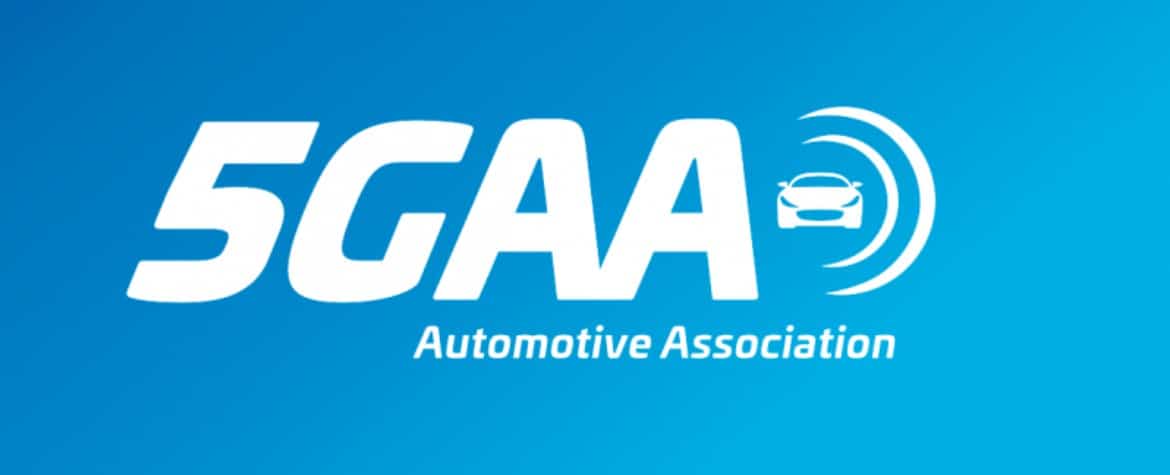
5GAA appoints CTO Dr. Maxime Flament
April 17, Brussels, Belgium – Dr. Flament will help advance the 5GAA mission of developing the framework to support next-generation connected mobility solutions
Since its creation in September 2016, 5GAA has benefited from an accelerated growth including key players with a global footprint in the automotive, technology and telecommunications industries. 5GAA now represents more than 80 members and is globally recognised as a driving force towards the deployment of the C-V2X technology and the future 5G network. This is the right time to bring in a CTO to support 5GAA’s global position. Dr. Flament’s starting date is April 22nd.
Dr. Flament comes from ERTICO – ITS Europe, the European association promoting research and deployment on Intelligent Transportation Systems. For more than a decade, he has been a leading contributor to many European activities on road safety, connected vehicles, automated driving, large-scale pilots, and digital mapping. In his latest role as Head of Department for Connected & Automated Driving (CAD), he worked with the public, private and research sectors to successfully shape the European expert CAD community. His position led him to develop strong collaboration ties with US DOT and the Japan MLIT as well as governments in China, Korea, Singapore, Australia and Canada. As a telecom engineer, ITS and CAD expert, Dr. Flament is the perfect fit for the position of CTO at 5GAA. Dr. Flament’s hire as the 5GAA CTO is a pivotal moment in the associations’ progress.
5GAA Chairman, Christoph Voigt, is confident that Dr. Flament will raise the organisation to the next level:
Maxime Flament’s contribution will be threefold: his experience and knowledge in Intelligent Transport Systems (ITS) will play a major role in bringing new possibilities to 5GAA. He will also broaden our collaboration with the wider mobility ecosystem. Thirdly, he will facilitate our mission to develop the next-generation of connected mobility solutions. We look forward to working in close co-operation with Maxime.
Dr. Flament is excited to join a team of experts at 5GAA:
5GAA is a growing and dynamic association with a promising path ahead. It is with great honour that I take on the challenge to serve as CTO and develop the communication technology that will connect all vehicles in the future. To do so is not a straightforward undertaking; there are numerous technical and non-technical challenges still to be addressed. This is why I am very excited to join a great team of experts involving all 5GAA members.
About 5GAA
The 5G Automotive Association (5GAA) is a global cross-industry organization of companies from the automotive, technology and telecommunications industries (ICT), working together to develop end-to-end solutions for future mobility and transportation services.
Created in 2016, the Association is comprised of over 75 members whose mission is to develop, test and promote communications solutions, initiate their standardisation and accelerate their commercial availability and global market penetration, to address society’s connected mobility and road safety needs with applications such as automated driving, ubiquitous access to services and integration into smart city and intelligent transportation.
Media contact:
Lisa Boch-Andersen
Senior Director, Strategic Communication and Marketing, 5GAA
Email: lisa.boch-andersen@5GAA.org / Mobile phone: +32(0)475450972

5GAA Commends European Strategy on C-ITS Report for fostering fair competition, technology neutrality and EU wide cooperation
The 5G Automotive Association (5GAA) commends the European Parliament’s adoption of its C-ITS report, highlighting the key opportunity for European industry to contribute to improving European road safety and making European land transport smarter. We welcome the Parliament’s stance calling for technology neutrality, fair competition and better coordination across Europe while expediting joint industry efforts on the road to 5G.
C-V2X or Cellular Vehicle-to-Anything encompasses both short-range and long-range use of LTE Cellular technology and will form an integral part of forthcoming Cooperative Intelligent Transport Systems by providing the natural path of technology evolution all the way to 5G, which will allow to fulfil the full potential of Cooperative, Connected and Automated Mobility through full integration into the 5G ecosystem.
5GAA believes in the clear legal framework set out in the EU ITS Directive (2010/40/EU), and in all players actively working together within the European Standardization Organizations to ensure timely availability of standards that will benefit consumers, and society more broadly.
‘’5GAA welcomes the efforts and progress made by the European Parliament in the area of C-ITS; and is committed to building upon this Report in partnership with all stakeholder groups, including the European Parliament, European Commission and Member States, to develop the most advanced, efficient and safe ecosystem for Cooperative Intelligent Transport Systems. For this to be achieved, close cooperation will be key for allowing us to unlock the potential of all available technologies to be harnessed with the aim of ultimately making Cooperative, Connected and Automated Mobility a reality, progress towards this ultimate goal which the forthcoming Delegated Acts on C-ITS should not jeopardise or hinder,’’ said Dino Flore, Director General of 5GAA.
Roger C. Lanctot, director, global automotive practice, Strategy Analytics also commented that “As in the case of recent comments from U.S. regulators, the decision by the EU Parliament helps to avoid the balkanization of vehicle safety technology…A technology neutral stance promises to deliver the most rapid adoption and return on investment in the form of lives saved along with collateral improvements in traffic and emissions.”
About 5GAA
The 5G Automotive Association (5GAA) is a global cross-industry organisation of companies from the automotive, technology and telecommunications industries (ICT), working together to develop end-to-end solutions for future mobility and transportation services.
Created in 2016, the Association is comprised of over 75 members whose mission is to develop, test and promote communications solutions, initiate their standardisation and accelerate their commercial availability and global market penetration, to address society’s connected mobility and road safety needs with applications such as automated driving, ubiquitous access to services and integration into smart city and intelligent transportation.

5GAA Announces Deployment of LTE-V2X by 2020
The C-V2X technology tested, validated, and commercially available in vehicles in 2020
The inclusion of cellular communication technologies (V2N – Vehicle2Network) into vehicles (i.e. “Connected Cars”) has been extremely successful, and since early deployments in the last couple of decades, we continue to see an expansion of how these technologies can deliver benefits for the vehicle, the driver, and other participants in the transportation ecosystem.
At present, the automotive manufacturing members of 5GAA operate more than 20 million Connected Cars that have the ability to connect to cellular networks (V2N). This V2N connection is used for a wide variety of application domains including telematics, infotainment, traffic optimization, as well as for safety applications like the recognition of slow or stationary vehicle(s) and warnings for such events as traffic jam ahead, road works and other traffic infrastructure related information, inclement weather conditions, emergency brake light and other hazard warnings. The current understanding, also based on the European C-ITS Platform Final Report, is that the nature of these warning messages is informational and the driver is responsible at all times.
As defined in the approved 3GPP Release 14 in June 2017, cellular networks are able to take another evolutionary step in the pathway to broaden the reach and applicability of benefits. ![]() In particular, this release addresses the challenges of delivering increased data volume, managing greater scale in connected devices, significantly reduced latency and providing higher levels of reliability. These defined attributes and an advanced architecture provide unprecedented support for the support of safety-critical communications, referred to as Cellular Vehicle to Everything (Cellular-V2X or C-V2X). In addition to such V2N enhancements, which rely on existing cellular networks, 3GPP Release-14 introduces the ability to support short-range communications between vehicles (V2V) and vehicle and road side infrastructure (V2I and I2V) without requiring any cellular network coverage.
In particular, this release addresses the challenges of delivering increased data volume, managing greater scale in connected devices, significantly reduced latency and providing higher levels of reliability. These defined attributes and an advanced architecture provide unprecedented support for the support of safety-critical communications, referred to as Cellular Vehicle to Everything (Cellular-V2X or C-V2X). In addition to such V2N enhancements, which rely on existing cellular networks, 3GPP Release-14 introduces the ability to support short-range communications between vehicles (V2V) and vehicle and road side infrastructure (V2I and I2V) without requiring any cellular network coverage.
3GPP Release 14 including C-V2X is also a key step to the next generation of cellular technology, 5G. Naturally C-V2X is already on a backwards compatible evolution path with enhancements being specified beginning with 3GPP Release 15.
The members of 5GAA are wholly committed to collaborating to ensure that the potential of the C-V2X technology is realized. This includes leading efforts to address key technical and regulatory issues, as well as integrating vehicle platforms with advanced cellular connectivity, networking and computing solutions.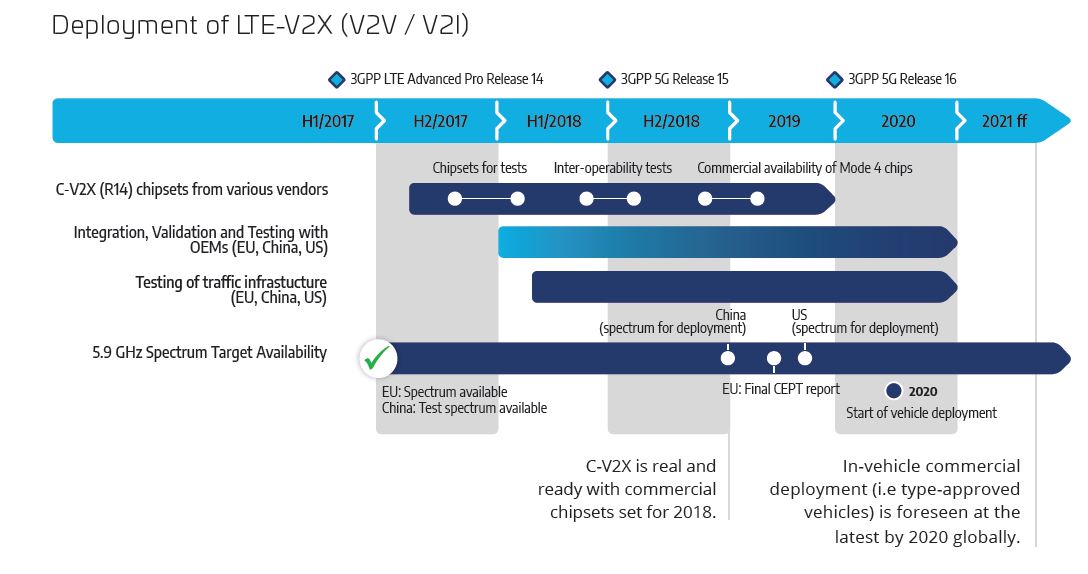
It is with this cooperation, collaboration, and commitment that 5GAA members continue to work to ensure that C-V2X technology is tested, validated, and commercially available in vehicles in 2020.
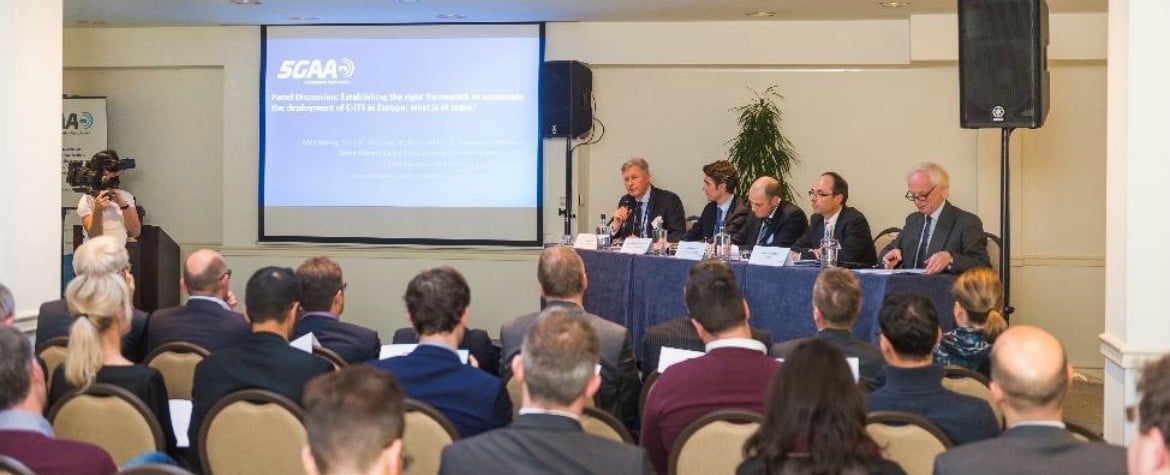
Peaceful coexistence of C-V2X and ITS-G5 technology offers the highest net benefits for Europe
5GAA and EU policymakers discuss future of 5G for connected and automated vehicles
12 December 2017, Brussels, Belgium – The 5G Automotive Association (5GAA), a cross-industry association of the telecoms and automotive industry, held a policy debate on Tuesday 5 December in Brussels to discuss the concrete actions necessary to implement 5G connected and automated vehicles in Europe. A recurring theme in Tuesday’s debate was the cohesive development and implementation of cellular “vehicle to everything” (C-V2X) technology, the technology that will enable automobiles to communicate via cellular networks to other connected devices but also the possibility of ad-hoc communication without any cellular network involvement (e.g. in case of weak coverage). Policymakers and industry face the ongoing challenge of creating a cohesive framework that enables private sector innovation while ensuring a safe and economically viable rollout of new technologies.
Attendees heard from a wide range from various European political and administrative representatives, including Eddy Hartog, EC Head of Unit Smart Mobility and Living, Attila Benedek (Adviser to István Ujhelyi MEP, rapporteur on European C-ITS Strategy), Jaime Moreno García-Cano of the Spanish traffic authority or Andreas Geiss, EC Head of Unit for Spectrum Policy. 5GAA was represented by its Secretary, Markus Dillinger of Huawei and board members, Luke Ibbetson of Vodafone, Joachim Göthel of BMW, Rainer Krumrein of Daimler, and Friedhelm Ramme of Ericsson.
The debate coincides with the Commission’s ongoing public consultation on its European Strategy on Cooperative Intelligent Transport Systems (C-ITS), which runs through January 5, 2018. C-V2X technology stands to significantly improve road safety and facilitate traffic flows in the EU. Ultimately, the benefits of this technology across the EU could save the several billion euros that are lost every year to traffic accidents and congested roadways.
Markus Dillinger, 5GAA Secretary and Member of the Executive Committee: “5GAA was founded to underscore the urgency in developing technology that makes our roads safer and smarter. Today’s debate brought together public and private sector stakeholders to discuss the capabilities of such technology as well as the acceleration of creating a regulatory framework in which the industry can work.”
During the event, analysts from Analysys Mason and SBD Automotive presented the findings of a cost-benefit analysis of implementing the C-V2X technology. The socio-economic returns of deployment of C-ITS systems may amount to EUR 43 billion by 2035 in Europe, if both C-V2X and the Wi-Fi Standard IEEE 802.11p are able to co-exist in the 5.9GHz spectrum band. The 5GAA also presented a study assessing the road safety benefits of LTE–V2X (PC-5) and IEEE 802.11p in the EU, which indicates that LTE-V2X (PC5) outperforms 802.11p in reducing fatalities and serious injuries. In addition, it demonstrates that the absence of interoperability between technologies is unlikely to present a substantive barrier to the reduction of road accidents in the short to medium term. Bill McKinley, 5GAA rapporteur on tests and trials, and Rainer Krumrein of Daimler also presented 5GAA’s perspective on C-V2X performance and future capabilities.
The event culminated in a panel discussion to discuss the right framework to accelerate the deployment of the C-ITS across Europe. Particular attention was given to short-range communications in the 5.9 GHz band and the four guiding policy principles established by the European Commission: uncompromised safety services for all users in case of multiple technologies implementation, technology neutrality of spectrum regulation, efficient spectrum use and introduction in the longer-term of 5G for the further development of cooperative, connected and automated mobility.
Luke Ibbetson, R&D Director Vodafone Group and member of 5GAA: “Both C-V2X and ITS-G5 technologies should peacefully co-exist in the 5.9 GHz band. The socio-economic and road safety studies presented at this event indicate that co-existence offers the highest net benefits for the European economy, amounting to EUR 43 billion by 2035.”
Joachim Göthel, Senior Manager Project 5G-Alliance of BMW and member of 5GAA: “C-V2X offers a strong evolution path to 5G which is absolutely essential to enable full connected and automated driving in the future, while enabling a fast roll-out for many functionalities in the very short-term, utilizing existing cellular networks.”
The presentations made during the Workshop are downloadable here below:
1. Introductory 5GAA Presentation
2. Presentation on cellular V2X socio-economic benefit study
3. LTE-V2X (PC5) and road safety in the EU
4. 5GAA Presentation Trials
5. Daimler view on V2X – 5GAA Policy Debate
About the 5GAA
The 5GAA is a cross-industry association between the cellular and automotive industries to develop, test and promote communications solutions, initiate their standardisation and accelerate their commercial availability and global market penetration, to address society’s connected mobility and road safety needs with applications such as automated driving, ubiquitous access to services and integration into smart city and intelligent transportation.
Pictures credit © Thomas Blairon, 2017. Reproduction of this image is authorised, provided the source is acknowledged

5GAA Study | The cost-benefit analysis on cellular vehicle-to-everything (C-V2X) technology and its evolution to 5G-V2X
This report, authored by independent telecoms, media and technology consultants Analysys Mason together with automotive consultancy SBD Automotive, assesses the benefits of cellular vehicle to everything (C‑V2X) technology for delivery of vehicle-to-everything (V2X) communication. The report, which has a focus on the benefits of such solutions in Europe, uses qualitative evidence, and describes quantitative cost–benefit analysis that the consultants have undertaken, relating to deployment of C‑V2X.
The purpose of the study has been to examine qualitative evidence and perform quantitative analysis, regarding the net benefits of C‑V2X. Quantitative analysis is focused on the European market, where the European Commission (EC) is currently undertaking a public consultation on the deployment of cooperative intelligent transport systems (C‑ITS).
Read the full study here.
As part of this study, primary research has been conducted to elicit views from the mobile and automotive industries on the benefits of C‑V2X. One-to-one interviews with companies involved in the 5GAA were held, in order to identify several key benefits, as summarised in Figure 1.1 below.
A snippet from the report featuring the benefits of C-V2X [Source: Analysys Mason, 2017]
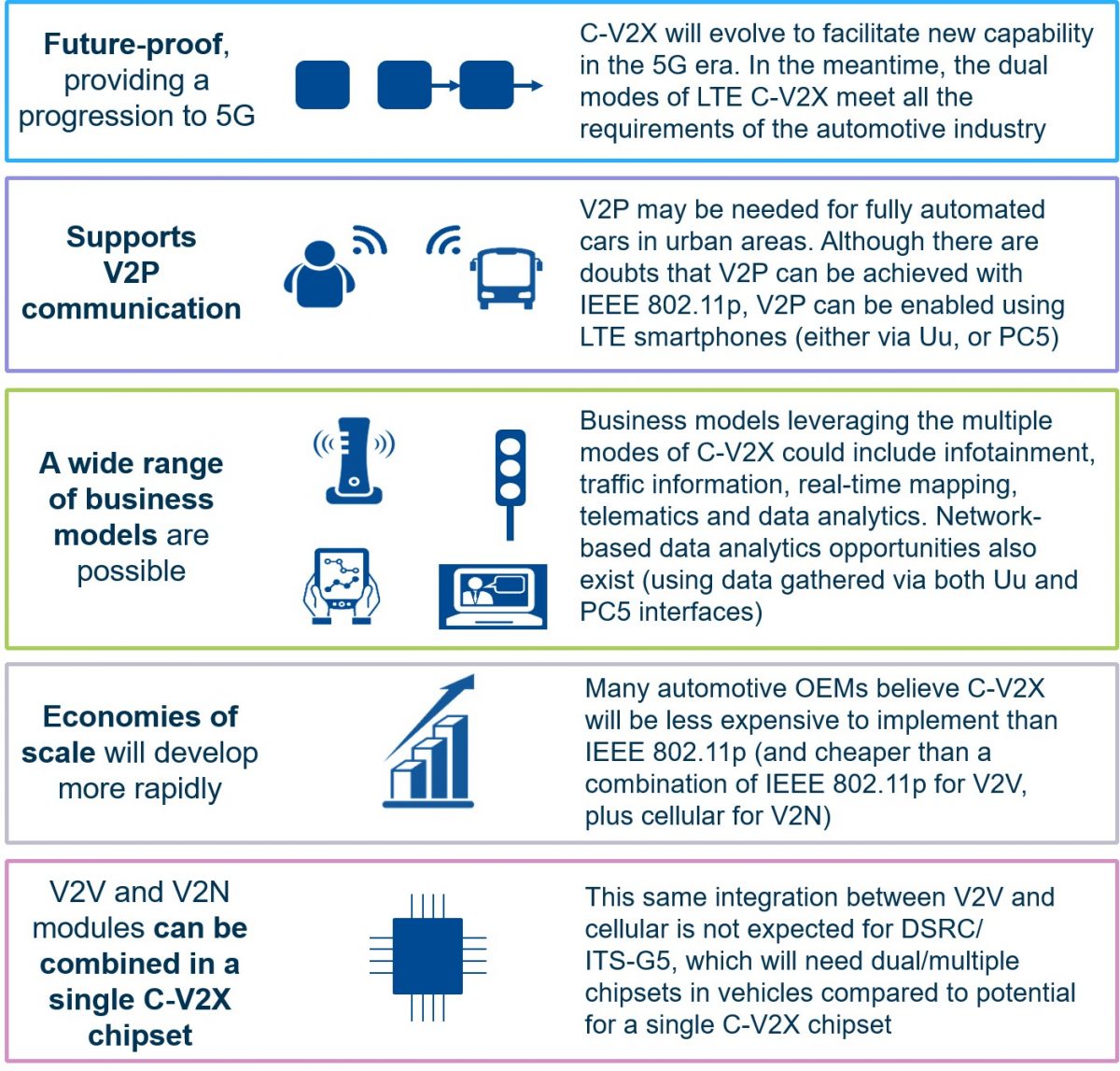

Socio-economic benefits of cellular vehicle-to-everything could amount to 43 Billion Euros by 2035
Brussels, 05th December 2017 – The 5GAA today published a report, authored by independent telecoms, media and technology consultants Analysys Mason together with automotive consultancy SBD Automotive, which assesses the benefits of cellular vehicle to everything (C‑V2X) technology for delivery of vehicle-to-everything (V2X) communication. The report, which has a focus on the benefits of such solutions in Europe, uses qualitative evidence, and describes quantitative cost–benefit analysis that the consultants have undertaken, relating to deployment of C‑V2X.
Publication of the report coincides with policy development on V2X, and use of the 5.9GHz band, in the European Union, where the European Commission is currently undertaking a public consultation on deployment of cooperative intelligent transport systems (C‑ITS).
The study concludes that the deployment of C-ITS systems is beneficial at the European Union level. Net benefits that could be accrued in Europe are estimated to be in the range of EUR20 billion to EUR43 billion in 2035 (with the highest benefits coming from increased road safety, and traffic efficiency), across the four scenarios modelled.
The most favourable scenario of those modelled in the study (amounting to EUR 43 billion net benefits) is where the potential for rapid penetration and economies of scale for C-V2X is maximised and both C-V2X and the Wi-Fi Standard IEEE 802.11p are able to co-exist in the 5.9GHz spectrum band. Such benefits do not arise in a scenario where the use of IEEE 802.11p is mandated for C-ITS services, which would result in less than half these expected net benefits (EUR 20 billion).
The study also indicates benefits of C-V2X for the European market lie in its deployment flexibility, with the ability to provide coverage for both short range and wide area applications, and certainty of future evolution to 5G, potentially facilitating earlier deployment as well as after-market deployment (e.g. V2X services provided in vehicles via a smartphone or other after-market device with C-V2X connectivity).
Reduced infrastructure deployment costs are a further key benefit of C-V2X, from the potential to re-use existing mobile infrastructure, and thus leveraging cellular technology integration and economies of scale, rather than building independently operated roadside infrastructure.
Christoph Voigt, 5GAA Chairman comments: “C-V2X will be fundamental to the deployment of cooperative intelligent transport systems. The benefits highlighted is this report indisputably demonstrate that this technology will lead to major improvements in driving and road safety. It further highlights that the European Commission should take a technology neutral approach and not limit these benefits by mandating the use of the Wi-Fi standard IEEE 802.11p”
The socio-economic benefits study on C-V2X can be found here.
Separately, the 5GAA has also today published a study which carries out a quantitative analysis of LTE–V2X (PC-5) and IEEE 802.11p technologies for short-range ad hoc/direct communications in reducing fatalities and serious injuries caused by motoring accidents in the EU. The modelling underlying this report was peer-reviewed and validated by the technology and policy consultancy, Ricardo. The study find that LTE-V2X (PC5) outperforms 802.11p in reducing fatalities and serious injuries on the EU’s roads. The 5GAA’s study on an assessment of LTE-V2X (PC5) and 802.11p direct communications technologies for improved road safety in the EU can be found here.
About C-V2X
V2X allows vehicles to communicate with each other and the wider transport ecosystem. It will potentially complement on-board sensors by providing enhanced information (such as data from other vehicles) over a longer range.
C‑V2X is a technology developed by the Third Generation Partnership Project (3GPP) to deliver V2X services, using two modes of communication:
- a direct vehicle-to-vehicle mode (called ‘PC5’ in 3GPP specifications) and
- a network communications interface (called ‘Uu’ in 3GPP specifications) for vehicle-to-network (V2N) communication via existing mobile networks.
Download Press Release here.
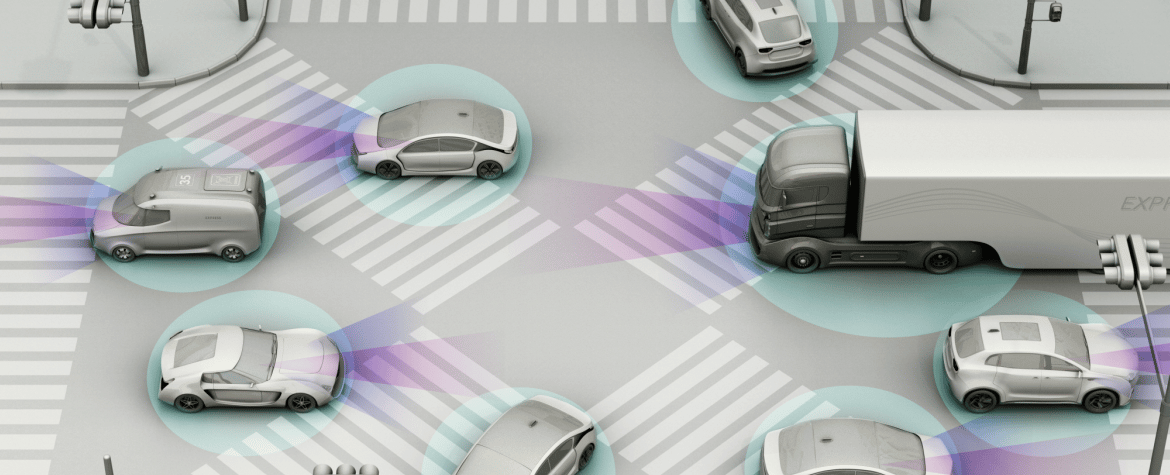
5GAA: cellular technology is key enabler for smart mobility of the future
Industry association calls on European Commission to allow stakeholders to work collaboratively towards an agreement on the technology catalyzing the mobility of the future and warns against a “premature and cumbersome legislative decision”.
The 5G Automotive Association (5GAA) encourages the automotive, technology, and telecommunications industries and the European Commission to be ambitious when evaluating technologies for connected, autonomous vehicles. 5GAA is confident that cellular communication technology (C-V2X) has the most benefits when applied to connected, self-driving cars. It has provided its views to the Commission in a workshop and a letter with recommendations. Since its launch one year ago, over 50 industry leaders from the automotive, technology and telecommunications industries have teamed up in 5GAA to accelerate C-V2X technology development and its evolution to 5G-V2X for enhanced safety, automated driving and connected mobility.
Christoph Voigt, Chairman of 5GAA said, “5GAA is confident that cellular technology (including direct vehicle-to-vehicle communication at 5.9 GHz) has the potential to lead to the best outcomes in the long run. We are strongly relying on the European institutional support to put in place a regulatory framework allowing for an industry-driven and swift deployment of this technology. It is crucial to consider how the 5.9 GHz band, the “life blood” of wireless vehicle communication, can be used efficiently in the context of 5G technology evolution, road safety, and economic scalability. The automotive and transportation sectors, both public and private, are making significant investment commitments. Therefore, we are urging the European Commission to allow the ITS-G5 and C-V2X stakeholders to work together towards an agreement on the future of connected and automated cars, without a premature and cumbersome legislative decision.”
5GAA has recently provided its views to the Commission in a workshop and a letter with recommendations.
Christoph Voigt: “We should aim high enough when selecting the solutions to make connected, self-driving vehicles a reality. These are a catalyst to improving the quality of life globally through safer traffic, improved mobility, cleaner air in cities, and a better experience overall for drivers.”
Dino Flore, Director General of 5GAA adds, “Saving lives through improved road safety is obviously the primary positive outcome of deploying communication technology solutions. In addition, we should take into account other aspects when evaluating alternatives. We’re not only talking about reducing congestion and pollution but also optimizing the driving experience. It is our view that cellular technology, including direct vehicle-to-vehicle communication at 5.9 GHz, has the most upward potential in the long run.”
Helping vehicles “understand the environment they are navigating”
Launched in September 2016 by 8 founding members the 5GAA has in less than a year grown to include over 50 leaders from the automotive, technology and telecom industries who collaborate cross-industry on the future of transport. 5GAA’s mission is to develop, test, and promote communications solutions, initiate their standardization and accelerate their commercial availability and global market penetration. The objective is to address society’s connected mobility and road safety needs with applications such as autonomous driving, ubiquitous access to services and integration into smart city and intelligent transportation.
Connected vehicles use communication technology to not only communicate with other vehicles but also with road infrastructure, other road users such as pedestrians, and the Internet – e.g. to provide traffic updates and parking guidance. Use cases include collision warnings, “traffic jam ahead” warnings, green light optimal speed advisory, parking guidance, and assisting drivers in tackling treacherous traffic situations (e.g. turning left at a crossroads). Connected vehicles will eventually reduce pollution, and make traffic more efficient, reducing congestion in cities and improving the flow of goods and people.
Christoph Voigt explains, “Equipping cars with sensors and cameras is one thing, but imagine what is possible when cars use cellular technology to communicate with their entire ecosystem: other vehicles, road users, infrastructure, and central services that give real-time information.”
“It’s the difference between a car that is capable of seeing what is happening in its immediate surroundings and one that can use all available information to allow for a safer and more comfortable driving experience. After all, as drivers we do more than purely react to what’s in front of us. We listen to traffic info, we are aware of the area we’re navigating, and we are alert to traffic jams in rush hour. We use context to guide our driving.”
“This is exactly what cellular connectivity can enable vehicles to make easier, or even take over from us in the case of self-driving vehicles. Except that it will be faster and more accurate,” concludes Christoph Voigt.
-Ends
About 5GAA
The 5G Automotive Association (5GAA) is a global cross-industry organisation of companies from the automotive, technology and telecommunications industries (ICT), working together to develop end-to-end solutions for future mobility and transportation services. Created in 2016, the Association is comprised of over 50 members which mission
is to develop, test and promote communications solutions, initiate their standardization and accelerate their commercial availability and global market penetration to address societal need. For more information please visit 5gaa.org
Contacts
Robbe Libbrecht
FINN PR
robbe.libbrecht@finnpr.com
M +32 497 23 30 38
5GAA Marketing & Communications
marcom@5GAA.org




